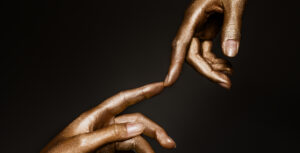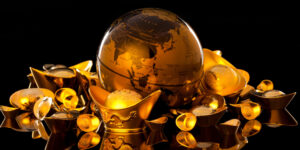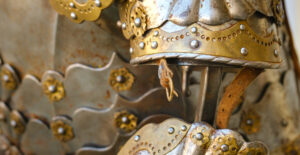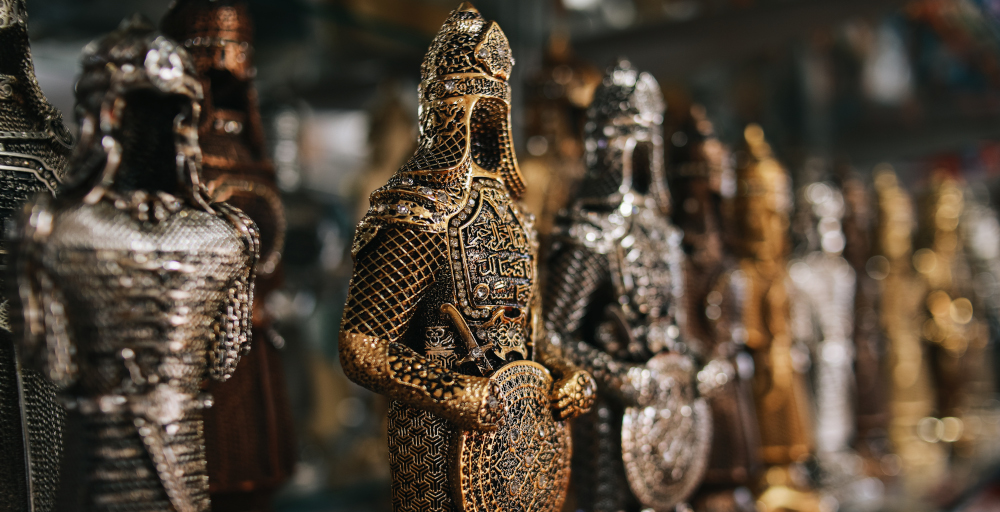
Under Johannesburg’s dense skyline and along the quieter avenues of Maboneng, there are workshops where gold does not glitter in the way you’d expect. Here, it’s not laid into luxury watches or stockpiled in bank vaults, it’s being bent, cut, melted, and reimagined into something raw, something political.
Across South Africa, a small but determined community of sculptors is reclaiming precious metals, gold, brass, bronze, and using them not as symbols of wealth but as tools of expression. Their work doesn’t sit quietly in display cases, it demands space, voice, and attention. This is about making a statement, sometimes beautiful, sometimes abrasive.
Walk into the gallery spaces of Cape Town’s Woodstock district, or the pop-up art shows in Soweto, and you’ll find pieces like distorted gold masks, jagged brass human figures mid-collapse, or thick alloy medallions engraved not with crests, but with protest slogans. One of the recurring themes is inequality, the glaring contrast between the wealth that gold represents and the struggle still present in so many South African communities.
Many of these artists come from backgrounds not typically associated with fine art. Some trained as metalworkers in industrial settings, learning to weld and cast metals for engineering projects before pivoting towards art. Others are self-taught, their first sculptures crafted from offcuts and scrap salvaged from scrapyards and abandoned buildings. What unites them is a shared belief, that gold’s story in South Africa isn’t finished yet, and it certainly isn’t just about finance.
The tradition of metal sculpture in South Africa stretches back centuries, intertwined with tribal history and spiritual practice. But where older pieces might have celebrated kingship or ancestral heritage, today’s works often tackle harder, more immediate subjects. One gallery in Braamfontein recently showcased a towering gold-plated figure holding both a cellphone and a miner’s pickaxe, two tools of survival in the modern economy. Another piece, spotted in Durban, depicted a shattered bracelet, each link shaped like a clenched fist.
It’s not just about what these sculptures say, but how they are made. Many artists deliberately use recycled metals, blending old jewellery, industrial waste, and melted-down machine parts. There’s a quiet symbolism in that choice, transforming materials tied to historical exploitation into fresh, resistant forms. The process is time-intensive. Gold, even when mixed with brass or copper, is temperamental. It can warp under too much heat, crack if cooled too quickly. Sculptors speak about this process almost as a dance, guiding the metal rather than forcing it.
What’s striking is how these pieces find their way into both upscale art shows and informal township exhibitions. You might see the same protest medallion worn on a velvet-clad mannequin in Sandton as you do hanging around someone’s neck in Katlehong, mass-produced replicas stamped out and sold at market stalls. That cross-class, cross-culture reach speaks to something unique, art that’s both exclusive and inclusive, that speaks to everyone but doesn’t water down its message.
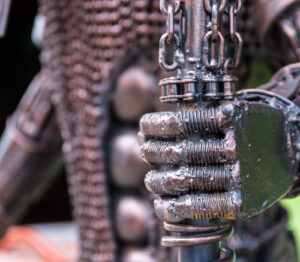 Critics and curators are starting to pay attention. There’s been growing interest from international collectors and museums looking for African contemporary art that goes beyond textiles or paintings. Sculptors featured in the Zeitz MOCAA or Goodman Gallery talk about the tension between selling their work as luxury items while ensuring the message behind them doesn’t get diluted.
Critics and curators are starting to pay attention. There’s been growing interest from international collectors and museums looking for African contemporary art that goes beyond textiles or paintings. Sculptors featured in the Zeitz MOCAA or Goodman Gallery talk about the tension between selling their work as luxury items while ensuring the message behind them doesn’t get diluted.
There are also, inevitably, practical challenges. Precious metals aren’t cheap, even if recycled. Many artists rely on community-backed studios and cooperatives, pooling resources and sharing equipment. It’s not uncommon to find sculptors hosting workshops for local youth, teaching metal casting, design, and basic business skills. It’s part education, part preservation, making sure the next generation sees gold as more than just a commodity.
At its core, this movement feels like a quiet rebellion. South Africa’s history with gold has always been about extraction, taking it from the earth, moving it elsewhere. These sculptors flip that script. They don’t dig it up, they gather what’s been left behind. They don’t ship it out, they turn it into something that stays here, that speaks back to the country itself.
The sculptures don’t just capture a moment, they hold a kind of weight that’s both literal and metaphorical. When you stand in front of a figure hammered from layered sheets of gold and brass, it’s not just the shine that draws you in, it’s the shape of its stance, the story etched into its surface. You find yourself looking beyond the object, into the questions it asks, who owns wealth? Who carries the cost?
In the end, gold in South Africa still shimmers. But thanks to these sculptors, it doesn’t shimmer just for the rich. It shimmers as a signal, a flicker of defiance and creativity in a country always balancing history and future, pain and possibility. You don’t have to stand in a luxury jewellery store to see it. You might just catch that flash of metal on a street corner, welded into a shape that says everything without a single word.

